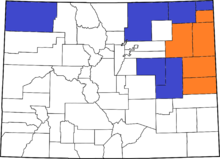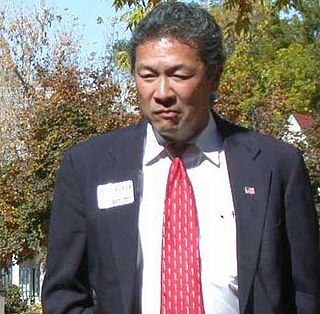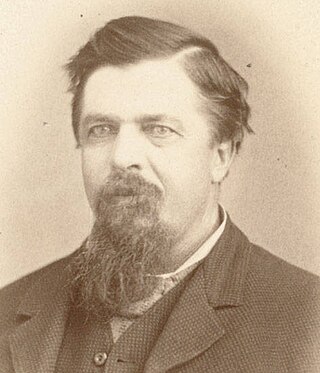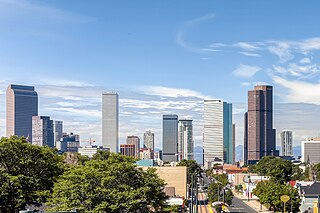This article needs to be updated.(November 2019) |
Northern Colorado | |
|---|---|
| Country | U.S. |
| State | Colorado |
Northern Colorado is the name for a region in the state of Colorado and a proposed state in the northeastern portion of Colorado.
This article needs to be updated.(November 2019) |
Northern Colorado | |
|---|---|
| Country | U.S. |
| State | Colorado |
Northern Colorado is the name for a region in the state of Colorado and a proposed state in the northeastern portion of Colorado.
Northern Colorado is a region in the northern portion of Colorado. It borders northwestern Colorado, northeastern Colorado, the northern portion of Central Colorado, western and southwestern portions of Nebraska, and the southeastern portion of Wyoming. Northern Colorado receives over 300 days of sunshine per year and has a semi-arid climate. However, the parts located in upper elevations of the Rocky Mountains receive 300 inches (760 cm) of snow per year and have an Alpine climate. The University of Colorado Boulder, Colorado State University, and the University of Northern Colorado are all located in Northern Colorado. [1]
Notably, Northern Colorado is home to several of the state's largest universities:

North Colorado or Northern Colorado is a proposed new U.S. state which would consist of several counties in the northeast portion of Colorado [2] [3] and possible counties from Nebraska [4] and Kansas. [5]
A University of Colorado law professor has indicated that an additional step would be required beyond the approval of the state legislature and the U.S. Congress, as the Colorado Constitution defines the state’s boundaries, thus requiring a vote on a constitutional amendment. [6]
A county commissioner of Weld County stated his belief that the county sends more oil and gas revenue to the state than it receives back for schools, roads, and other services. In 2013, the Democratic-controlled Colorado General Assembly passed tighter gun control laws, higher renewable energy reliance laws, and livestock treatment laws. A higher environmental standard oil and gas production law was narrowly defeated. During the debates over these laws, talk of secession began in the Eastern Plains area. At a meeting of the state's county commissioners in early June, a State House leader indicated that they would attempt to pass the oil environmental standards law again. This brought the secession discussion to a higher level with Weld County Commissioners Mike Freeman, Sean Conway, and Douglas Rademacher leading the proposal with a hearing scheduled regarding counties placing secession questions on the November 2013 ballot. [7]

Along with Weld County, several other counties were invited to or interested in being involved with this proposal: Morgan, Logan, Sedgwick, Phillips, Washington, Yuma, and Kit Carson. Also interested in joining the new state are parts of Nebraska. [4] Colorado's Eastern Plain counties all may possibly be involved in the split, but Larimer County Commissioners indicated that their county would not likely approve of a split. [7]
On July 8, 2013, a meeting of representatives from 10 counties was held in Akron, Colorado to begin setting the boundaries of the potential state. The news media reported that some people in Lincoln and Cheyenne counties wish to join in forming the state. Additionally, the organizers reported that three other Colorado and two Kansas counties also wish to join in forming the state. The county commissioners involved discussed an alternative plan if breaking away is not feasible. This alternative would be to change the Colorado Constitution to have one state senator per county; [5] however, the U. S. Supreme Court invalidated such representation by county in Reynolds v. Sims (1964) as a violation of the one man, one vote principle.
Cheyenne County —outside the original proposed area— became the first county to refer the measure to the people on July 23, 2013. [8] A total of eleven counties placed the measure on the November 5, 2013, ballot. [9] Voters in Cheyenne, Kit Carson, Phillips, Washington, and Yuma counties approved the measure. [10]

Weld County is a county located in the U.S. state of Colorado. As of the 2020 census, the population was 328,981. The county seat is Greeley.

Larimer County is a county located in the U.S. state of Colorado. As of the 2020 census, the population was 359,066. The county seat and most populous city is Fort Collins. The county was named for William Larimer, Jr., the founder of Denver.

Cheyenne County is a county located in the U.S. state of Colorado. The county population was 1,748 at 2020 census. The county seat is Cheyenne Wells.

Stanley Toshi Matsunaka is a former Democratic member of the Colorado State Senate, serving from 1995 to 2003. He served as President of the Senate for two years. In both the 2002 and 2004 congressional elections, Matsunaka lost to Republican Marilyn Musgrave for Colorado's 4th congressional district.

Benjamin Harrison Eaton was an American politician, entrepreneur and agriculturalist in the late 19th and early 20th century. Eaton was a founding officer of the Greeley Colony and was instrumental in the establishment of modern irrigation farming to Northern Colorado. A member of the Republican Party, he served as the fourth Governor of Colorado, from January 1885 to January 1887, with the nickname of the "farmer governor". He was one of the largest land owners in Weld and Larimer counties, at one time owning over ninety 160 acre (0.6 km²) parcels, all watered from canals and reservoirs of his own construction. His projects were influential in helping turn the South Platte River valley into an important agricultural region in the state's economy. The town of Eaton, Colorado in western Weld County is named for him.
Colorado's 4th congressional district is a congressional district in the U.S. state of Colorado. Located in the eastern part of the state, the district encompasses most of the rural Eastern Plains as well as portions of the Colorado Front Range including Loveland, Highlands Ranch, Castle Rock, and Parker.

The United States Office of Management and Budget has defined the 12-county Denver–Aurora, CO Combined Statistical Area comprising the Denver–Aurora–Lakewood, CO Metropolitan Statistical Area, the Boulder, CO Metropolitan Statistical Area, and the Greeley, CO Metropolitan Statistical Area. The United States Census Bureau estimates that the population was 3,214,218 as of July 1, 2012, an increase of +3.99% since the 2010 United States Census, and ranking as the 16th most populous metropolitan combined statistical area and the 17th most populous primary statistical area of the United States. The population estimate for 2020 was 3,652,385.

Glenn Vaad is a former legislator in the U.S. state of Colorado. First elected to the Colorado House of Representatives as a Republican in 2006, Vaad represented House District 48, which encompasses western Greeley and southwestern Weld County, Colorado.
The politics of Colorado, United States, are that of a blue state. Once considered a swing state that used to be Republican-leaning, Colorado has been trending Democratic since the early part of the 21st century due to changing demographics and a rising number of the large unaffiliated bloc of voters leaning Democratic. The growing shift of the state's Republican Party towards social and religious conservatism along with shifting further to the right has also been cited as reasons for the changing voting patterns of Colorado.
IBMC College is a private for-profit career college with 3 campuses in northern Colorado. The college is headquartered in Fort Collins, Colorado. This accelerated for-profit career training institution has additional campuses in Longmont and Greeley.

The Front Range Urban Corridor is an oblong region of urban population located along the eastern face of the Southern Rocky Mountains, encompassing 18 counties in the US states of Colorado and Wyoming. The corridor derives its name from the Front Range, the mountain range that defines the western boundary of the corridor which serves as a gateway to the Rocky Mountains. The region comprises the northern portion of the Southern Rocky Mountain Front geographic area, which in turn comprises the southern portion of the Rocky Mountain Front geographic area of Canada and the United States. The Front Range Urban Corridor had a population of 5,055,344 at the 2020 Census, an increase of +16.65% since the 2010 Census.

Rod Pelton is a state senator from Cheyenne Wells, Colorado. A Republican, Pelton represents Senate District 35, which includes much of east-central and southeastern Colorado.

Colorado's 1st Senate district is one of 35 districts in the Colorado Senate. It has been represented by Republican Byron Pelton since 2023. Prior to redistricting the district was represented by Republicans Jerry Sonnenberg and Greg Brophy.

Byron H. Pelton is a state senator from Sterling, Colorado. A Republican, Pelton represents Colorado's 1st Senate district, which includes all or part of Logan, Morgan, Phillips, Sedgwick, Washington, Weld, and Yuma, counties in northeast Colorado, including all or parts of the communities of Greeley, Sterling, Fort Morgan, Lochbuie, and Severance.